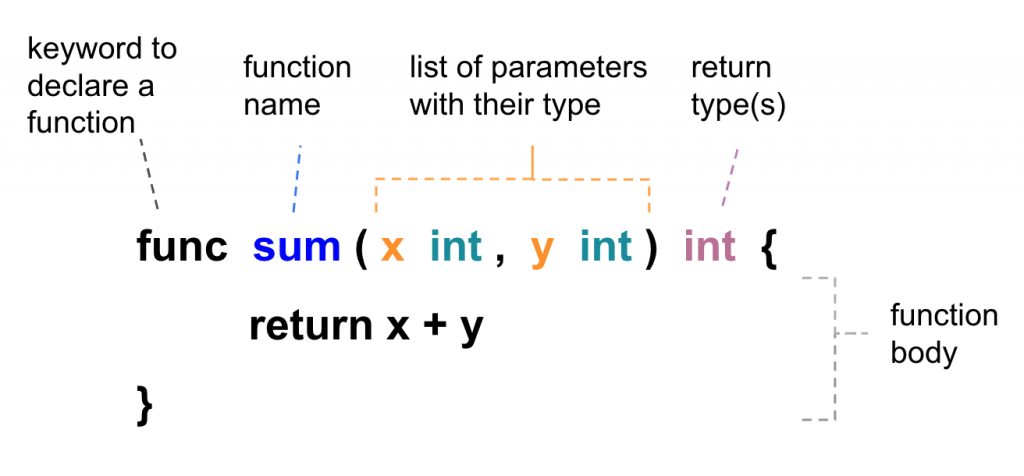We can use the func keyword to declair a function as following:

The input parameters and return type(s) are optional, such as func main(). Besides, a function can return multiple values as well. For example:
package main
import (
"errors"
"fmt"
)
func main() {
hello()
rate, _ := getRate(53, 100)
fmt.Println(rate, "%")
}
func hello() {
fmt.Println("Hello world")
}
func getRate(numerator int, denominator int) (float64, error) {
if denominator <= 0 {
err := errors.New("denominator cannot be zero or negative")
return 0.0, err
}
rate := float64(numerator) / float64(denominator) * 100
return rate, nil
}
On above example, we return an error type value to indicate an abnormal situation and use blank identifier _ to ignore some of the results from a function that returns multiple values.
We can put functions to another go file as well. For example:
utils.go
package main
import "fmt"
func hello() {
fmt.Println("Hello world")
}
main.go
package main
func main() {
hello()
}
Then you can run command "go run *.go" to test the result
$ go run *.go
Hello world
As we mention in previous blog, slice is pass by reference.
When you change the value of a slice type parameter inside the function,
The value outside the function is changed as well.
for example:
package main
import "fmt"
func main() {
x := [5]int{5, 4, 3, 2, 1}
y := []int{5, 4, 3, 2, 1}
reset(x, y)
fmt.Println(x) //output = [5 4 3 2 1]
fmt.Println(y) //output = [0 4 3 2 1]
}
func reset(a [5]int, s []int) {
a[0] = 0
s[0] = 0
}
